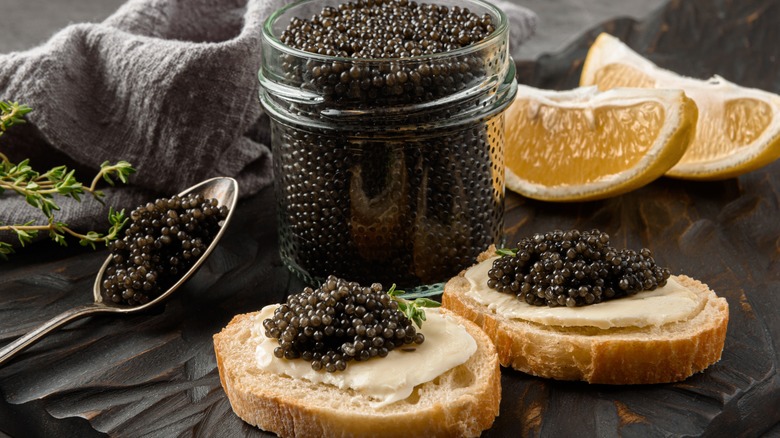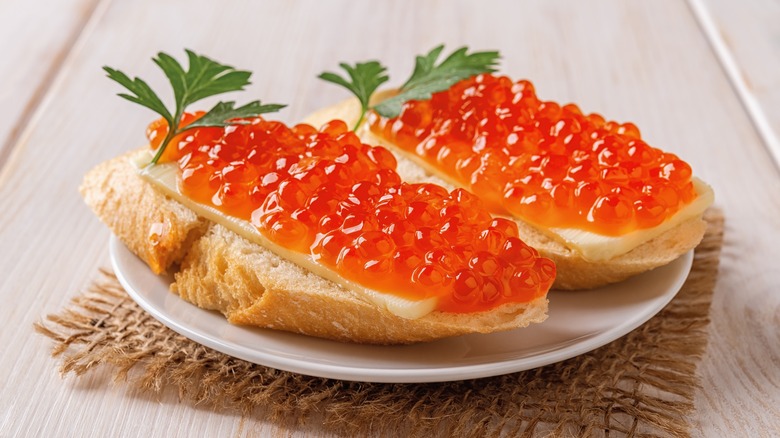The Discount Caviar Alternative For Fancy Dinners On A Budget
Everyone knows if you're looking for a dish that screams luxury and wealth, you need not look further than caviar. The signature dish of Russian royalty for centuries, caviar is the cured eggs — or roe — of sturgeon, varieties of which can be found in the waters of Eastern Europe, North America, and Asia. The always high price of caviar depends on what kind of sturgeon it came from. According to the International Union for Conservation of Nature (IUCN), all 26 species of the world's sturgeon are considered at risk of extinction due to pollution and overfishing — largely to get caviar. Because of this, nearly all caviar comes from farm-raised sturgeon at this point due to environmental and conservation regulations. However, even in these cases, it is still considered scarce, which increases the demand for it from novelty, thereby increasing the price. The rarer the sturgeon, the more costly the caviar.
Additionally, farming sturgeon is an expensive and time-consuming process since female sturgeon do not produce eggs until they are somewhere between eight and 20 years old, which along with importing rules and the principles of supply and demand, lead to hefty prices between $55 and $3,100 per ounce. Luckily, not all fish eggs are so expensive, and there is a way to get a little bit of the infamous rich, briny taste of caviar without breaking the bank, namely by eating the roe of different fish like salmon.
An affordable alternative to caviar
Just like all Champagne is sparkling wine, but not all sparkling wine is Champagne, all caviar is roe, but not all roe is caviar. And since it isn't caviar, it doesn't all carry caviar's mind-blowing price tag. The best options for an affordable caviar substitute are salmon or whitefish roe. These eggs, while still subject to sustainability standards in many areas, are significantly less expensive than sturgeon eggs since they come from fish that are not endangered and have shorter life cycles. As a result, salmon roe, or "red caviar," is significantly less expensive, with cans costing as little as $10 per ounce.
These types of roe are more colorful than caviar, coming in bright orange, yellow, and red colors as opposed to the dark black or greenish look of caviar, and each has its own flavor palette. Salmon roe is known to be less salty than caviar and sweeter, as opposed to the briny, fishy taste of caviar.
Another bonus besides the significantly lower price point is that roe carries all the nutritional benefits of caviar, including lots of omega-3s and vitamins, with slightly fewer calories and fat. However, if you want to avoid fish eggs and still get a sense of the briny taste of caviar, you can always try the vegan alternative known as sea grapes.

